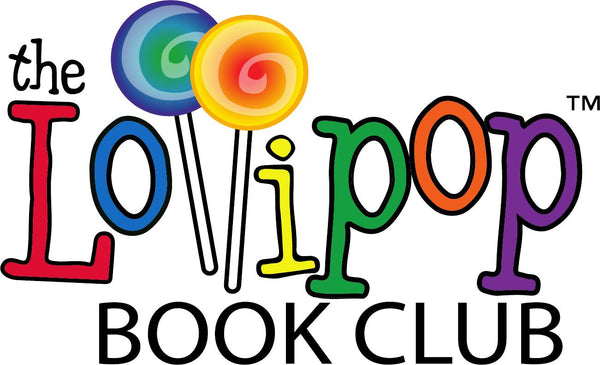Valentine's Day is a special holiday when people pause to express love for all the special people in their lives. It is typically enjoyed by people who are involved romantically, through the exchange of love notes, flowers, and candlelight dinners. Over the years, celebrations have evolved to include many other relationships, like those between parents and children, best friends, and classmates. Many elementary schools host card exchanges, inviting students to get their creative juice flowing by making boxes to receive notes from other students. Next time little students gather around for these exchanges, they will be interested in learning some interesting Valentines' Day facts

Everything to Know About Valentine's Day
The association of Valentine's Day with love and romance began in the Middle Ages. It developed from a belief in England and France that birds begin their mating season on February 14th. In other words, lovebirds are actually birds! According to the National Retail Federation, love is expensive. American spend in excess of $20 billion (with a B) every single year for Valentine's Day. That's a lot of chocolate! In fact, the celebration of this sweet holiday is not limited to just romantic lovers, a fact that is clear with the hundreds of children's books about love especially for this holiday. Continue reading to learn everything about Valentine's Day, including the history of the holiday, how people around the world celebrate it, and other fascinating information.
Valentine's Day Trivia Children Will Love
For children, Valentine's Day is less about romance and more about celebrating love and friendship in a broader sense. Kids get to show appreciation for the people who make them feel happy and loved, including their family, friends, and even pets. This focus on kindness and inclusion is a positive message that resonates strongly with them. Unlike some holidays with complex origins, the core themes of Valentine's Day are simple and easy for children to understand. It's a wonderful opportunity for them to develop key social skills and emotional intelligence as they learn to express gratitude and think about how their actions can make others feel special. Be sure to share some of this fun trivia about how this holiday has evolved as a universal day of love.

How Conversation Hearts Originated
Conversation hearts are a Valentine's Day tradition with a history that connects them directly to the holiday's themes of expressing affection. These candies became a popular and fun way for people, particularly children in classrooms, to exchange lighthearted messages of friendship. They offered a simple, affordable, and engaging way to participate in the holiday's tradition of giving gifts.

(1) Conversation hearts were originally medicine.
We can thank a pharmacist from the 1800s for candy conversation hearts. An engineering-minded man named Oliver R. Chase owned a popular apothecary that needed to speed up production. Of particular focus was making lozenges to sooth sore throats and dispel bad breath. Chase invented a machine that pressed medicinal and binding ingredients together, and then cut them into discs. The chalky output was the precursor for conversation hearts as we know them today.
(2) More profit was made by swapping out medicine for sugar, thus the Necco Wafer was invented.
It turned out that the speedy machine could be put to better use by making candy. Replacing the medicine to curb sore throats with sweeteners, a treat that is today known as a Necco Wafer was introduced to customers with great success. This disc-shaped candy, sold in rolls with eight different flavors, is one of the oldest candies still in production.
(3) Eventually a new heart-shaped candy evolved, exclusively sold on Valentine's Day.
The candy-making machine was further developed to stamp little messages on the discs printed in red vegetable dye. The process evolved further by molding the round discs into the shape of hearts with endearing words of love and affection imprinted on top.
(4) More than 8 billion conversation hearts are produced every year.
There are approximately 45 different messages printed across all the chalky, little hearts. "Be Mine", "Kiss Me", and "Be True" are the three that have stood the test of time, while many others have come and gone with the years. With a variety of hard-to-distinguish flavors and debatable tastiness, these little messages combined with nostalgia contribute to the popularity of this sweet.
Most Popular Valentine's Day Gifts
For Valentine's Day, the most popular gifts strike a balance between tradition and personal thought. While timeless gestures like flowers, chocolates, and jewelry remain classics, many people are now choosing gifts that offer a more personalized or memorable experience. Classic and traditional gifts such as a dozen red roses, a heart-shaped box of chocolates, and jewelry are always at the top of the list for good reason—they are classic symbols of romance. Many couples also celebrate the day with a romantic dinner, either at home or at a favorite restaurant. Beyond these staples, there's a growing trend toward gifts that create lasting memories, like a weekend getaway, a cooking class, or even a custom-made photo album. The goal is to show love and appreciation through both classic symbols and unique, thoughtful gestures.

(5) Almost 150 million Valentine's Day cards are purchased annually.
A crafty lady turned cards into a business. A woman named Esther A. Howland is credited with the first mass-produced Valentine's Day cards in the US. In the 1840s, she became known as the "Mother of the American Valentine" when she created elaborate cards with lace and ribbon. This business model blossomed into an enormous industry that produces 145 million cards each year. Cards are a flexible, affordable way to share affection with everyone, including both romantic and non-romantic relationships.
(6) A box of chocolates is the most traditional gift.
The very first box of Valentine's Day chocolates was introduced by Richard Cadbury in 1868, according to history.com. This traditional gift can be shared with just about anybody you love. The heart-shaped box is filled with a variety of chocolates that will satisfy every sweet tooth. Surveys indicate that caramels are the favorite, followed by chocolate-covered nuts, chocolate-filled, cream-filled, and coconut. Annual Sales for chocolate candy on this holiday are approaching $3 billion.
(7) Roses are always given as a gesture to express love.
Those beautiful bouquets of roses have journeyed from afar, despite their fresh, vibrant appearance. About 60% of roses are produced in California, but the rest come from South America. About 250 million roses are sold every year, which represent more than 80% of the flowers purchased for Valentine's Day. Of these, red is the most popular color.
(8) Romantic dinners at restaurants are popular gift experiences.
Restaurant owners benefit from the second busiest day of the year, second only to Mother's Day. Going out for a romantic dinner is a tradition shared by millions of couples. So you better make your reservation early if you want to celebrate this romantic holiday at your favorite eatery. The average check may set you back anywhere from $120 to $192 based on national data for the holiday. The hefty prices are associated with consumers opting for more expensive menu items, like steak, enjoying extra cocktails, and indulging in dessert.
Valentine's Day Is For More Than Lovers
Valentine's Day has grown to be about more than just romantic love. While it's still a big day for couples, the holiday has evolved to celebrate all kinds of affection, including friendship, family, and self-love. Many people use Valentine's Day as a chance to show appreciation for their friends. For example, "Galentine's Day" is a popular trend where female friends get together to celebrate one another. It's also a day for family. It's common for parents and children to exchange gifts or cards, and in elementary schools, kids often give valentines to all their classmates, reinforcing the idea of friendship and inclusion. Finally, the day is also a great opportunity to practice self-care. Many people take the time to treat themselves to a nice meal, a spa day, or a favorite hobby as a way of showing themselves some love.

(9) February is a booming month full of marriage proposals.
While still a traditionally romantic holiday, it should come as no surprise that Valentine's Day is a popular choice for marriage proposals. Some surveys estimate as many as 6 million people get engaged on this day, a happy occurrence for jewelers who enjoy a lucrative February.
(10) More kids are the recipient of gifts than their parents.
At one time, mothers and fathers only had eyes for each other, spending their hard-earned money on gifts that reflected the depth of their emotions. When these unions produce little offspring, spending habits shift in February. No one knows exactly how, why, or when this happens. But one apparent finding has surfaced in surveys over the years. Parents are more likely to buy their children, rather than their spouses, gifts on Valentine's Day. In fact, a popular talk show found that 85% of their audience was planning a purchase for their kids while only 59% had something in mind for their better halves.
(11) Americans share their love, and money, with pets every February.
Various sources track that the total spend for pets on Valentine's Day is close to $2 billion, a number that is tracking higher year over year. Surveys indicate that the average amount spent on gifts for their most loyal dog companions is about $35, while cats get the short end of the stick with the gift-spend is closer to $30. In addition to toys, Americans love to buy their pets heart-shaped treats expressing their love.
(12) Galentine's Day is growing in popularity amongst girls who are best friends.
While traditionally a romantic holiday, this time of year is becoming a more inclusive celebration for people who want to honor every kind of love. Credit is attributed to Amy Poehler's character on the TV sitcom Parks and Recreation when she invited her besties to a brunch, leaving husbands and boyfriends behind. Ever since the idea was aired in 2010, women have embraced the opportunity to exchange gifts and shower their girlfriends in blankets of affection.





